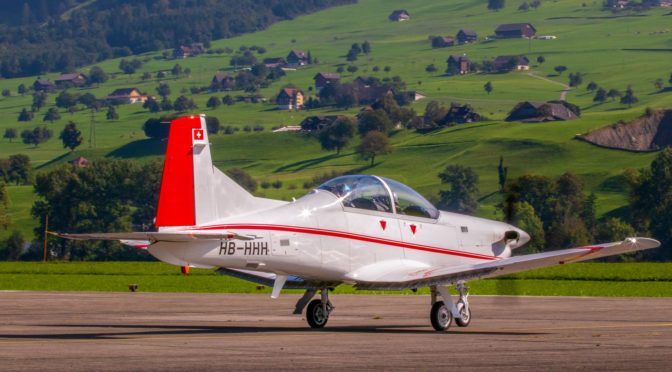On Sunday 14 November 2021 the new Pilatus PC-7 MXK trainer aircraft was reveiled. This is in fact a renewed version of the PC-7 Mk II trainer. We already saw it prior to the unveiling. Read more about it below.
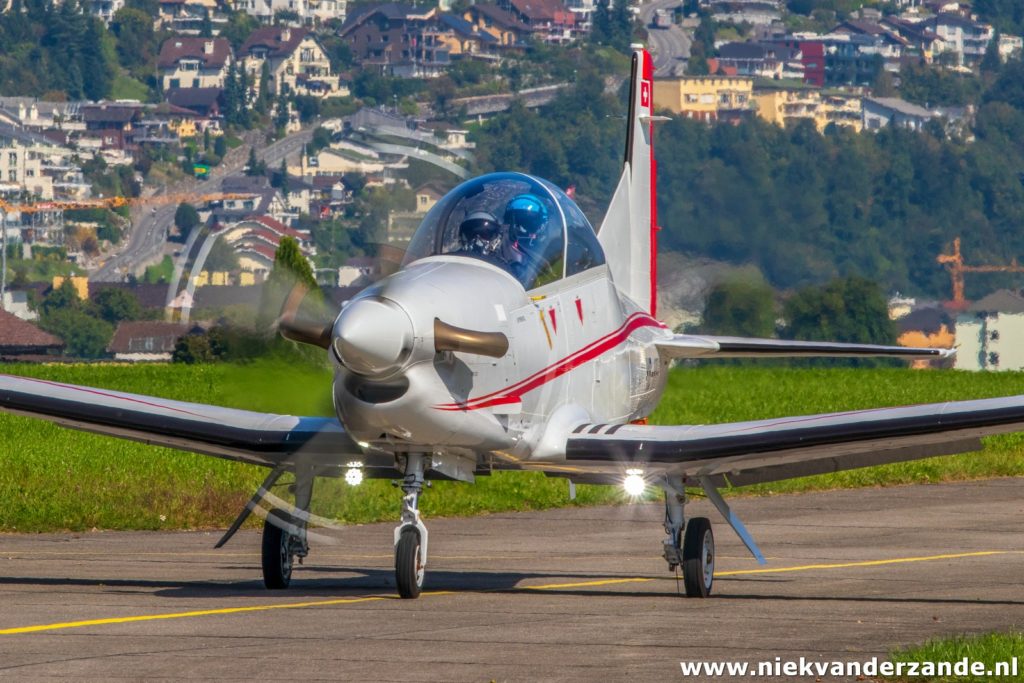
In 1994, at the request of the South African Air Force, Pilatus devised a new variant of the popular trainers, the PC-7 MkII. The fuselage of a PC-9 was used and the wings (with suspension points) of the PC-7. The engine used was a Pratt & Whitney Canada PT6A-25C delivering 700 hp (515 kW). This engine has been cut in power to reduce wear and tear and thus reduce maintenance costs. To have an idea, the PC-9 has a Pratt & Whitney engine of 1,149 hp (857 kW).
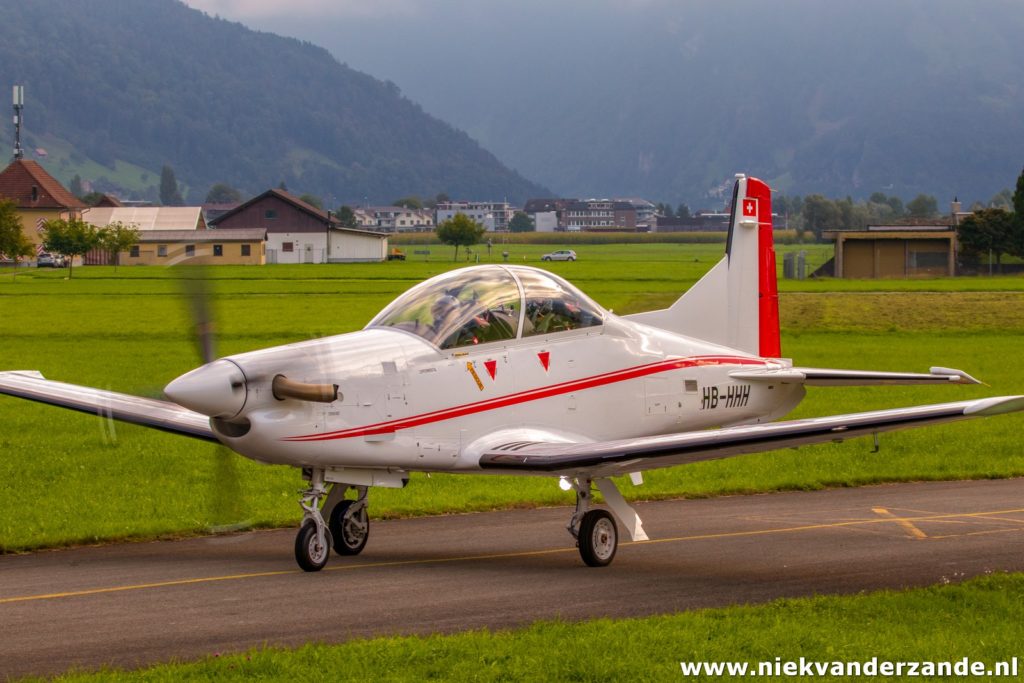
With a new glass cockpit, new avionics, improvements in the area of crew comfort and other technical innovations, the PC-7 MKX offers smart state-of-the-art training capability in the Basic Training segment at unrivalled cost, with outstanding robustness and unmatched reliability. The smart Basic Trainer is now available to take on a new generation of student pilots and turn them into first class military aviators.
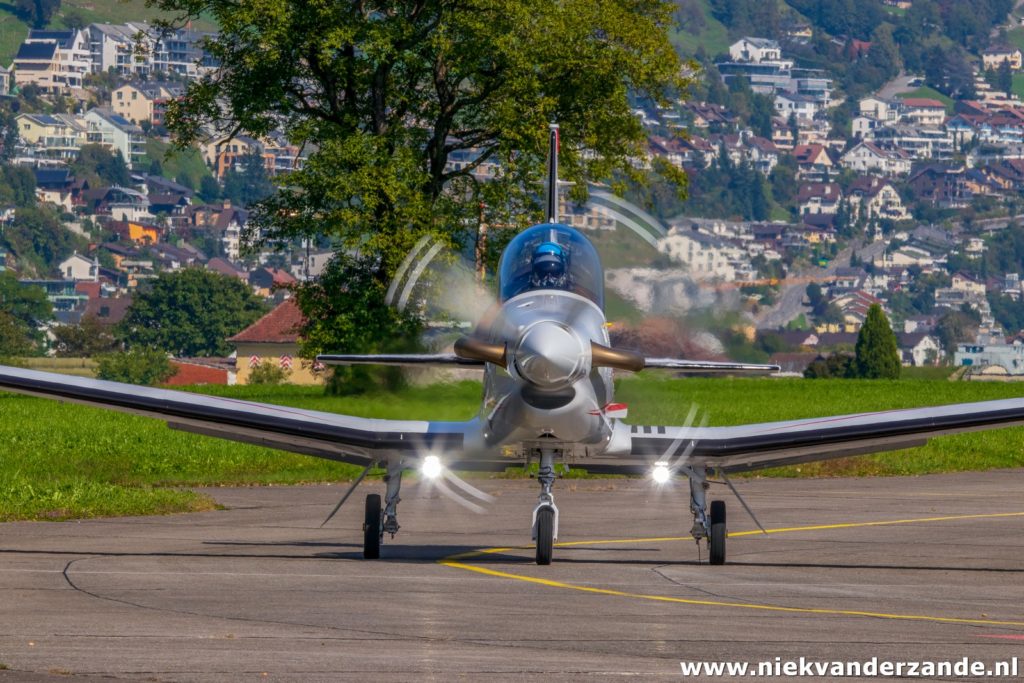
A state-of-the-art cockpit with smart avionics is at the core of the brand-new PC-7 MKX. The cockpit is centred on a three-display philosophy utilising the next generation of high definition screens. It gives the student an easy entry into the world of modern avionics, while practising vital pilot skills using a proven airframe with benign and forgiving flying characteristics. The PC-7 MKX can be used to train the broadest possible range of aircrew, making it the ideal basic trainer for air forces around the world.
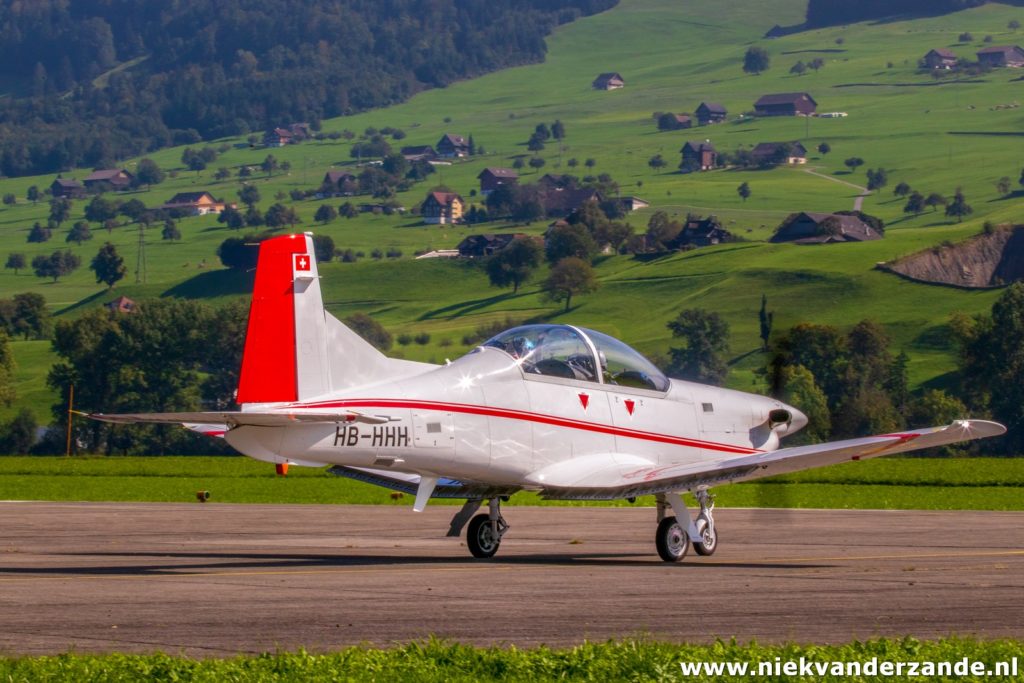
The PC-7 MKX’s smart avionics suite offers broad capability, allowing maximum flexibility for use in a wide variety of training missions. This ensures that the student can easily transition to these platforms when embarking on the next phase of training. The PC-7 MKX avionics capability is designed as a comprehensive baseline configuration with various add-on options such as synthetic vision system, traffic advisory system, autopilot, cockpit camera and mission debriefing system to meet specific training needs.
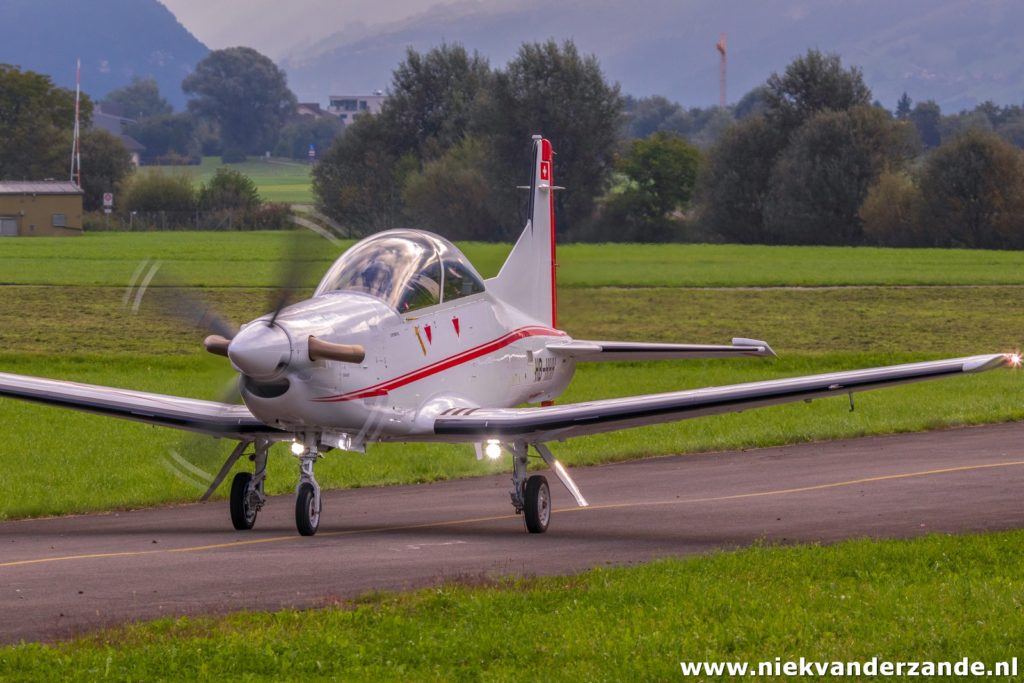
The cockpit features a large primary flight display and multi-function displays to give students the earliest possible exposure to the technology found in today’s front line assets. The primary flight display allows selection of various flight modes, whilst the left and right displays features a moving map for navigation, a Flight Management System and an Engine Indicating and Crew Alerting System.
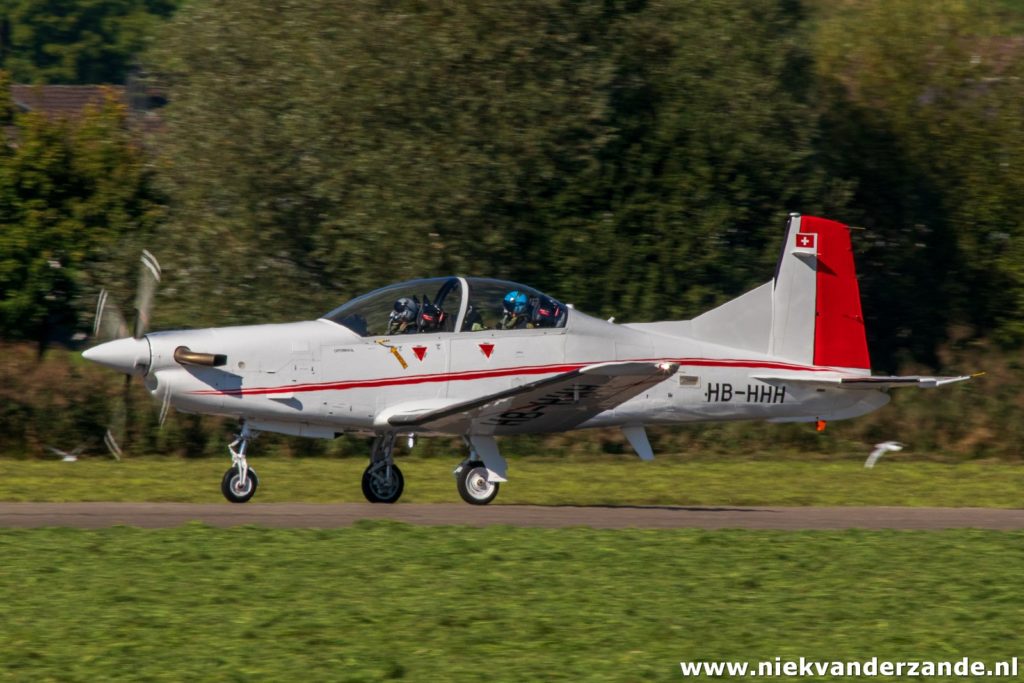
A comprehensive set of training products is also available to cover all aspects of ground based training. From the simplest type of training aid, virtual reality tools through to a full flight simulator, all training equipment is of the highest quality and designed to support integrated, progressive learning. This allows the air force to optimise training time and reduce training cost per pilot.
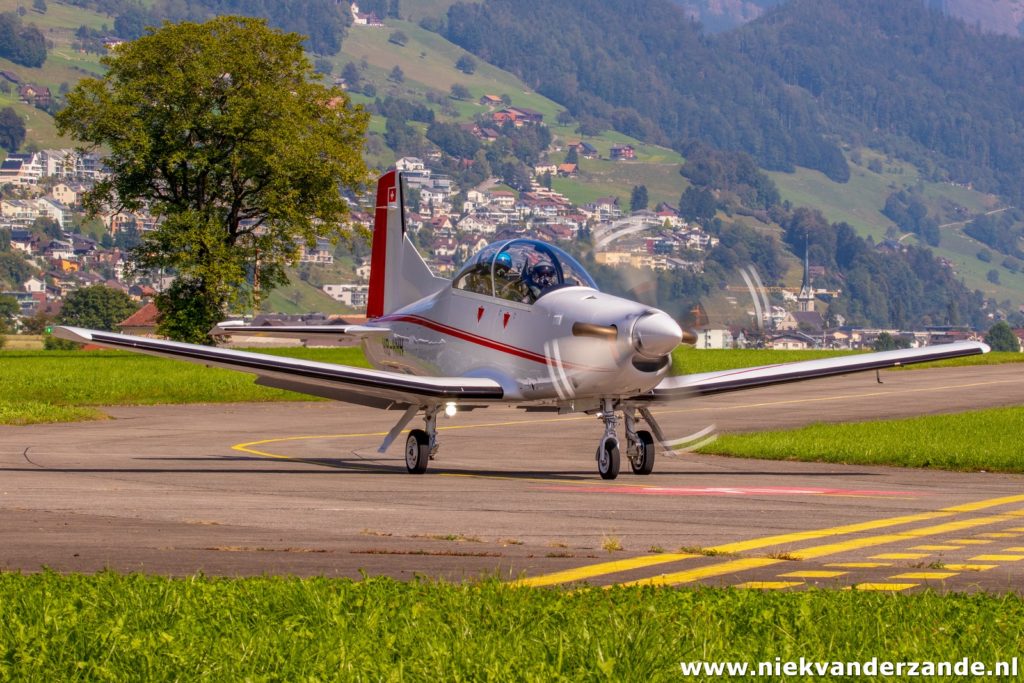
The design of the PC-7 MKX uses conventional semi-monocoque construction for the wing, fuselage and empennage. The primary structure is built of aluminium alloy sheet and extrusion. Combined with precision workmanship, these features provide a high degree of interchangeability as well as easy replacement of parts. The PC-7 MKX is an exceptional trainer built on a solid certification foundation, guaranteed to deliver a lifecycle of at least 30 years.
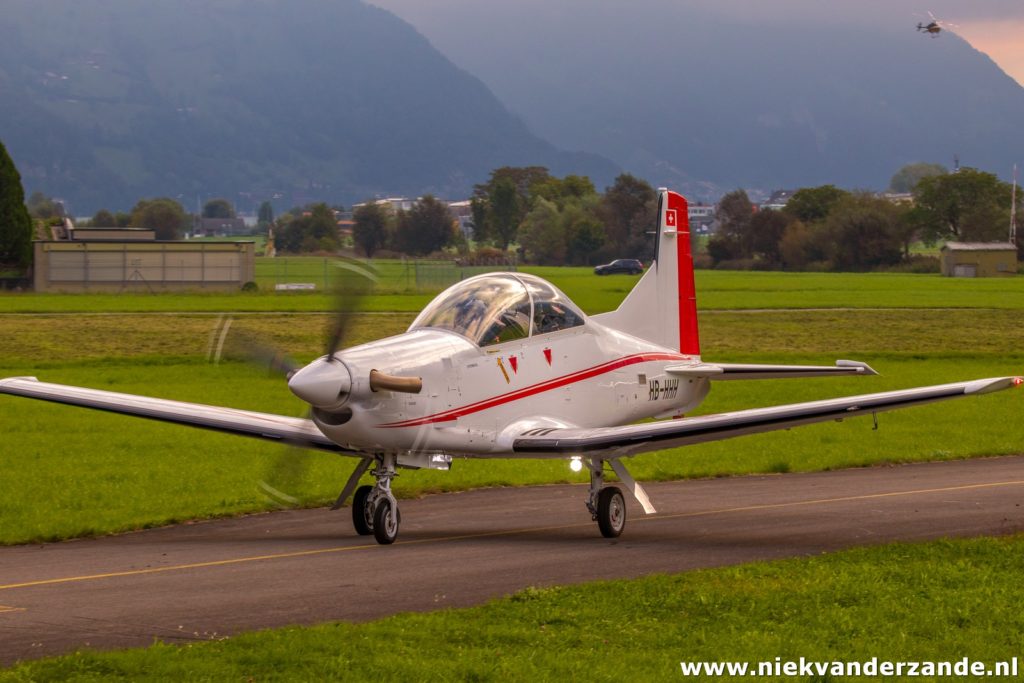
Sources: Pilatus Aircraft, Aironline

